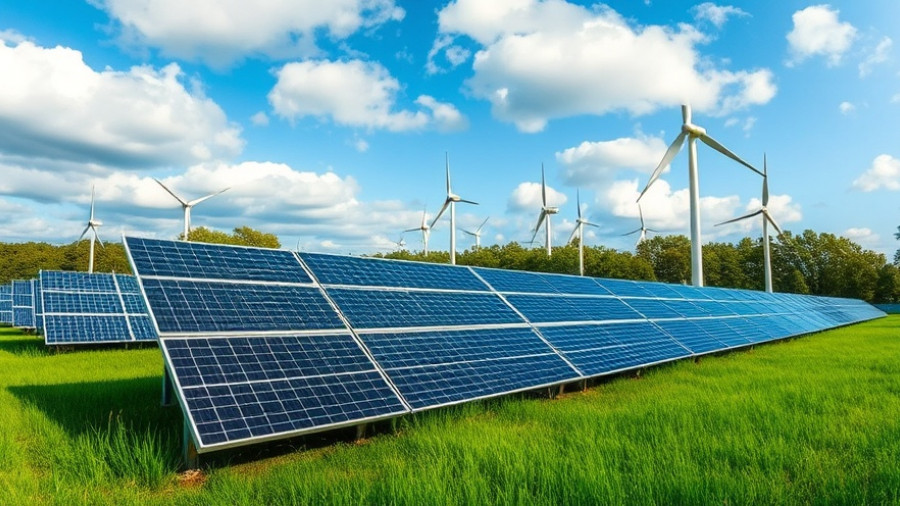
The Current Climate Tech Landscape: Navigating Uncertainty
As the pressure of new political realities mounts, companies in the climate technology sector find themselves at a crossroads. The prevailing narrative was once that innovative solutions would flourish with increasing government grants and private funding, particularly in the wake of significant technological advancements. However, as the recent landscape shows, projects valued at approximately $8 billion have been halted or scaled back in the U.S. throughout 2025 alone, hinting at a sobering shift in dynamics.
Among the factors exacerbating this situation are new tariffs that create economic uncertainties for stakeholders. Businesses heavily reliant on funding to drive their climate initiatives now face the tense prospect of dwindling support due to policy rollbacks. This sentiment resonates within the senior editorial team at MIT Technology Review, especially amidst discussions highlighting investments that are being threatened.
Emerging Solutions: Opportunities Amid Challenges
Despite looming challenges, the roundtable session highlighted key players and technologies that are still making headway. Electric trucks and innovative agricultural practices, including gene-edited crops, continue to lead the charge toward more sustainable agricultural and transportation methods. These technologies find themselves on the MIT Technology Review's watchlist, making them crucial pillars in the fight against climate change.
Industry experts argue that the ongoing push for improved ecological practices can lead to enhanced operational efficiencies and consumer engagement. As traditional funding routes experience turbulence, these technologies can indeed serve as beacons of hope, aligning economic interests with environmental goals, as suggested by previous downturns where resilience emerged in dire circumstances.
The Resiliency of Climate Tech Investments
History provides some optimism; many of today's leading companies blossomed from seemingly bleak landscapes. Investors are now positioning themselves to seize opportunities emerging from established sectors. For instance, during uncertain times, markets tend to shift toward recognizable assets—solar, wind, and electric transportation are considered mature sectors that have the fortitude to thrive despite unfavorable conditions.
Moreover, notable firms like Quinbrook are betting on these robust sectors, pursuing investments in biogas while keeping their eyes on solar and renewable natural gas. Their perspective echoes that resilience can be found by adapting strategies to current realities, as older, tested sectors weather the challenges better than newer, less predictable technologies.
Global Implications: The World Stage in Climate Tech
The implications of the U.S. climate tech landscape reverberate across global markets as countries such as China continue to make substantial investments in renewable energy technologies. Their aggressive positioning can serve as a reminder that the U.S. must strive to maintain its leadership status in climate innovation or risk losing ground.
Some analysts worry that if issues plaguing U.S. climate technology persist, it might pave the way for China to expand its dominance in sectors such as electric vehicles and renewable energy production. Creating a sense of urgency among U.S. legislators and stakeholders alike could be essential in reversing this potential trend.
Actionable Strategies for Businesses Moving Forward
For businesses involved in the climate tech sector, adopting innovative strategies to navigate fluctuating market conditions is vital. Leveraging emerging technologies while integrating them with traditional practices can help create hybrid models that mitigate risk. Focus on collaborations between established corporations and startups can lead to new synergies, driving collective advancement toward climate solutions that benefit the economy and environment alike.
Furthermore, fostering patience during turbulent times will prove beneficial. Historical data supports that significant technological advancements often follow periods of intense unpredictability. Remaining vigilant allows businesses to capitalize on emerging trends that can reshape industry frameworks.
The Emotional Dimension: Why Your Role Matters
For stakeholders engaged with climate technology and sustainable practices, connecting on an emotional level with these advancements is essential. Understanding the human impact of climate innovation—be it creating jobs, improving health outcomes, or restoring ecosystems—can spur dedication and resilience in this field.
The conversation around climate solutions thus transcends technical discussions. It is, after all, about ensuring a viable future for our communities and our planet. Recognizing the various relationships built on striving for a more sustainable world connects individuals to a broader narrative, illuminating the critical role they play in this ongoing fight.
Conclusion: Seizing the Moment for Climate Innovation
The challenges facing the climate technology industry are indeed formidable. However, navigating through uncertainty often leads to innovative breakthroughs that can redefine the landscape. By harnessing the potential of both existing and new technologies, businesses can become frontrunners in sustainable practices. Now more than ever, reflecting on not just the potential of these advancements but also embracing the emotional connections to climate innovation can drive larger efforts.
It’s time to not just seek solutions but to implement them with urgency and purpose. Your involvement today can be the catalyst for the innovations of tomorrow.
 Add Row
Add Row  Add
Add 




Write A Comment